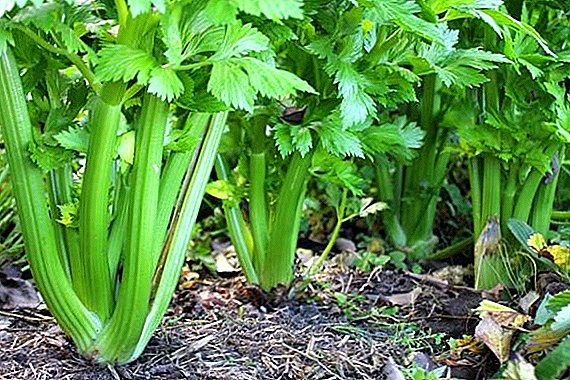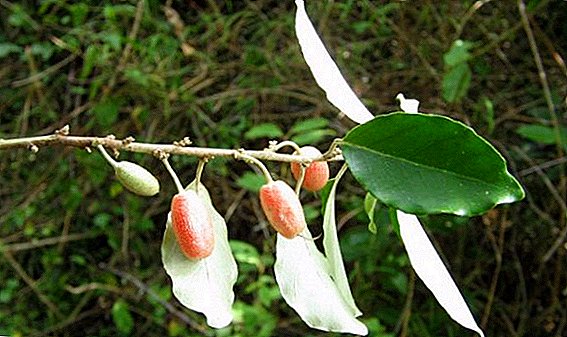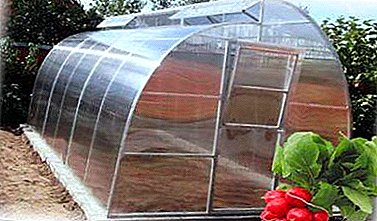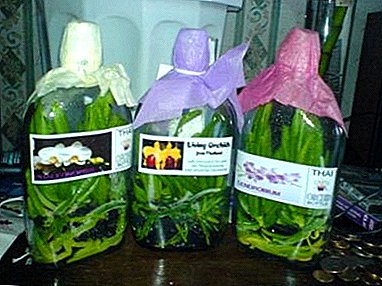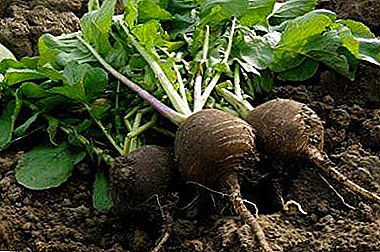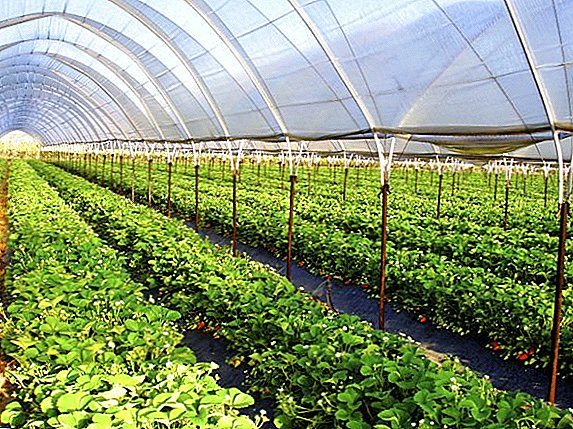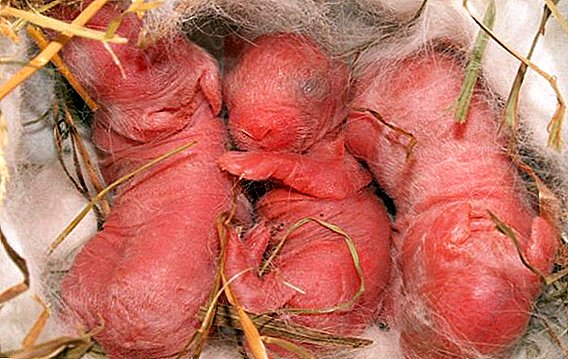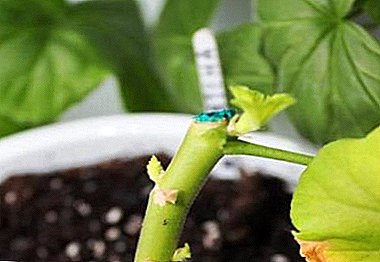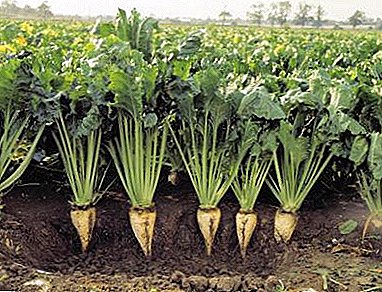
We all know that sugar in our country is mainly obtained from beets. But, as it turned out, the process of growing this crop is very laborious and not always beneficial even for an experienced farmer.
Beets require a huge investment of effort and time in order to achieve high yields.
The article describes in detail about the technology of sugar beet production, how to grow, harvest and preserve the crop. And also let's talk about diseases and pests and measures to prevent possible problems.
Productivity from 1 ha
There are several types of beets. But sugar is the most popular. In the process of its processing, sugar, pulp and molasses are obtained directly. Molasses is used to prepare alcohol and yeast, and the pulp is food for cattle. Some waste from beets can be used as fertilizer. Details about the technology of production of sugar from sugar beet, including at home, we told here, and from this article you will learn how to use this root and what is obtained in the process of processing.
The yield of sugar beet per 1 hectare ranges from 18 to 30 tons.
Reference! Record figures of this crop yield were recorded - 50 tons per hectare.
The technology of growing root crops from seeds
Where and for how much seed can be purchased?
If we talk about the two capitals of our state, then in these regions prices differ slightly. For example, in Moscow, one kilogram of seeds costs about 650 rubles. While in St. Petersburg you can find packaging of the same grade and for 500 rubles.
Of course, if you go further to the area, you will be able to purchase seed even cheaper.
Landing time
 Sowing dates in different regions of our country do not coincide a bit and depend on climatic conditions.
Sowing dates in different regions of our country do not coincide a bit and depend on climatic conditions.
- In those areas where the humidity is always elevated (North-Western regions of the country), you can plant beets, starting in mid-April.
- In other regions (the Crimean peninsula and the Caucasus), it is also not worthwhile to delay sowing.
The maximum term is the end of April or the first weeks of May.
Otherwise, the top layer of the soil begins to dry up, a large number of diseases and pests are diluted in it, which significantly reduces the yield indicators.
Landing place
Often, the agronomist prefers those fields in which they used to grow winter cereals, spring grains and leguminous plants, because they are the best predecessors for sugar beets (for details on where the beets grow, what climate and soil they like, read here). Do not sow the seeds on the soil on which they were previously sown:
- corn;
- linen;
- rape;
- perennial bean and cereal grasses.
You need to choose a place that will be sufficiently lit. With a lack of light, leaf plates will grow only on leaf plates, slowing down the accumulation of fruit mass.
What should be the soil?
The following types of soil are best suited for growing sugar beet:
- medium and well cultivated turf;
- sod-calcareous;
- sod-podzolic loamy;
- sandy soils.
Experienced agronomists recommend to refrain from sowing sugar beet on such soils:
- peatlands;
- sandy land.
It is important to choose a substrate that will retain water for a long time, but at the same time air will circulate well, avoiding its stagnation.
Acidity should be neutral or weak.
Sowing process
 Now about the rules of sowing and how much it amounts to - the rate of the sowing unit. The planting material should be planted in well-loosened soil, which should be heated to at least 6 degrees of heat. Worth saying that sugar beet tolerates frost well but, of course, it will fully develop only at temperatures above +15 degrees.
Now about the rules of sowing and how much it amounts to - the rate of the sowing unit. The planting material should be planted in well-loosened soil, which should be heated to at least 6 degrees of heat. Worth saying that sugar beet tolerates frost well but, of course, it will fully develop only at temperatures above +15 degrees.
Seeds need to be planted in rows, retreating between each row for half a meter. This is necessary for the agronomist’s convenience: to moisten and loosen the earth. In depth, seeds are placed no deeper than five centimeters. To ensure good seedling, you need to soak the seeds before sowing at least a day.
Sowing unit rate - 1.2-1.3 sowing unit per hectare (depending on climatic conditions).
Growing conditions, crop care and harvest
Air temperature
Root crops will fully develop, if the temperature outside is below 20 degrees. Nothing wrong with the fruit will not happen if they survive several nights with frost. If, after the first seedlings emerge, the weather is cool for a long time, it is better to cover the culture with a film, arranging a kind of greenhouse. This will prevent the beets from freezing.
Air humidity
In this indicator, culture is unpretentious. She will calmly tolerate both an increase in humidity and a decrease in humidity. The main thing is that the soil in the period of especially dry days should be well hydrated.
Watering mode
It is necessary to choose the mode of irrigation, based on the condition of the soil. It should dry about 5-7 centimeters after the previous watering. If the agronomist complies with the norms of wetting the land, the crop will show high yield results. However, watering can not be overdone, since such manipulation can lead to decay of root crops.
Top dressing
 At the moment, agronomists are widely used as fertilizer for the soil not only manure, but also winter wheat straw. One ton of straw feeds the soil three to four times more than the same amount of manure.
At the moment, agronomists are widely used as fertilizer for the soil not only manure, but also winter wheat straw. One ton of straw feeds the soil three to four times more than the same amount of manure.- Before sowing, you can make ready-made liquid complexes in combination with organic fertilizers.
- At the very beginning of the growth of seeds, they will need to be fertilized with phosphorus, since it is this element that is consumed the most.
- As soon as you notice that the foliage has begun its active growth, feed the sugar beet with potassium and nitrogen.
- Approximately one and a half months after the first seedlings emerge, it is necessary to start feeding with complex fertilizers, which include nitrogen, potassium, and phosphorus. carry out this manipulation every two weeks for 45 days.
- Lack of boron adversely affects the development of root crops - diseases and pests can develop. Therefore, at least once a month, boron must enter the root system of a culture.
Soil treatment with herbicides for weed protection
Reference! To protect the soil from weeds, it is worth treating it only with those herbicides that are included in the State Register. Only in this way can an agronomist protect against substandard goods.
Herbicide should be applied only under the previous culture. or after it in the autumn period. It is necessary to abandon their use in a period of severe drought.
You can use the tool from weeds and after the first shoots appeared. But this should be done only when the temperatures of the air and the soil become equal. If, after processing the herbicides, another 6 hours have not passed, and it started to rain, the treatment should be repeated.
Other care measures
Hilling. The essence of this process consists in sprinkling plant stalks with a moist ground. This procedure has several advantages:
- helps to retain moisture in the soil;
- does not allow leaching of nutrients;
- forms a stronger root system;
- improves air and water circulation;
- fights weeds.
Mulching is the covering of the soil surface with mulch to protect it. This manipulation is necessary for beetroot to protect the entire rhizome from pests, as well as from temperature changes, besides, the soil does not harden and does not turn into lumps after watering.
Cleaning
The harvesting dates are shifted in case the leaf plates deteriorate for some reason (this could be a drought or, on the contrary, freezing). You need to have time to collect the beets before they start to form new leaves, as their growth will be carried out at the expense of stocks of root crops.
Usually, the “sugar” crop is harvested in the second half of September and is done with the help of cleaning machines.
Storage
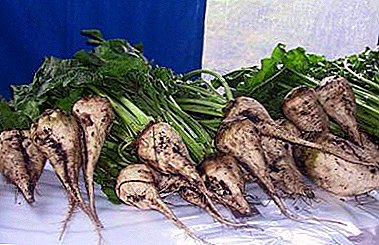 Immediately after harvesting the beets are placed in the shoulders, which are located on the edges of the fields. Such storage is considered intermediate, but it is necessary for fruits. Burta need to make straw, and then cover the vegetables with it. Such manipulation helps to protect the beets from frost, wind and rain.
Immediately after harvesting the beets are placed in the shoulders, which are located on the edges of the fields. Such storage is considered intermediate, but it is necessary for fruits. Burta need to make straw, and then cover the vegetables with it. Such manipulation helps to protect the beets from frost, wind and rain.- It is necessary to put piles in places that will be accessible to transport, even in bad weather.
- Then the beets are transported for further long-term storage. Put the roots in kagaty. But before laying it is necessary to distribute the vegetables into groups: completely healthy, as well as fruits with minor mechanical damage. Fruits that are affected by pests and diseases are not subject to laying for long-term storage.
- It is important to ensure that the beets do not germinate. Since such roots quickly deteriorate. To avoid this, you need to choose only well-dried kagats that can be ventilated. And just before the laying, the lody is treated with a 1% solution of sodium salt. Also from the beet will need to trim the tops.
Diseases and pests
When growing sugar beet, an agronomist may encounter the following problems:
- root and fruit rot, soil pests - usually a wireworm, beet nematode;
- insects that harm leaf plates are fleas, duck dead beet, beet fly, aphid.
Prevention of various problems
To avoid the development of diseases and pests, it is necessary to adhere to simple recommendations:
- choose the right place to plant;
- to process the soil in time;
- select suitable predecessors;
- process seeds before seeding with insecticidal preparations;
- apply pesticides to combat harmful insects.
The technology of sugar beet cultivation is not always profitable. During this process, a sufficient number of problems arise, therefore not every agronomist will undertake this business. However, there are also advantages here - the competition in the market is not so great.


 At the moment, agronomists are widely used as fertilizer for the soil not only manure, but also winter wheat straw. One ton of straw feeds the soil three to four times more than the same amount of manure.
At the moment, agronomists are widely used as fertilizer for the soil not only manure, but also winter wheat straw. One ton of straw feeds the soil three to four times more than the same amount of manure. Immediately after harvesting the beets are placed in the shoulders, which are located on the edges of the fields. Such storage is considered intermediate, but it is necessary for fruits. Burta need to make straw, and then cover the vegetables with it. Such manipulation helps to protect the beets from frost, wind and rain.
Immediately after harvesting the beets are placed in the shoulders, which are located on the edges of the fields. Such storage is considered intermediate, but it is necessary for fruits. Burta need to make straw, and then cover the vegetables with it. Such manipulation helps to protect the beets from frost, wind and rain.